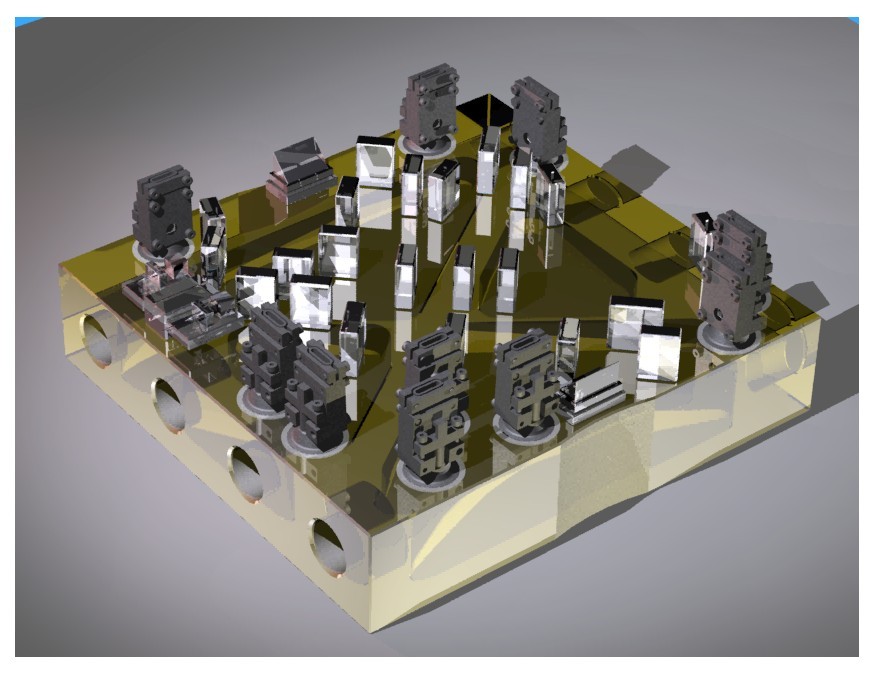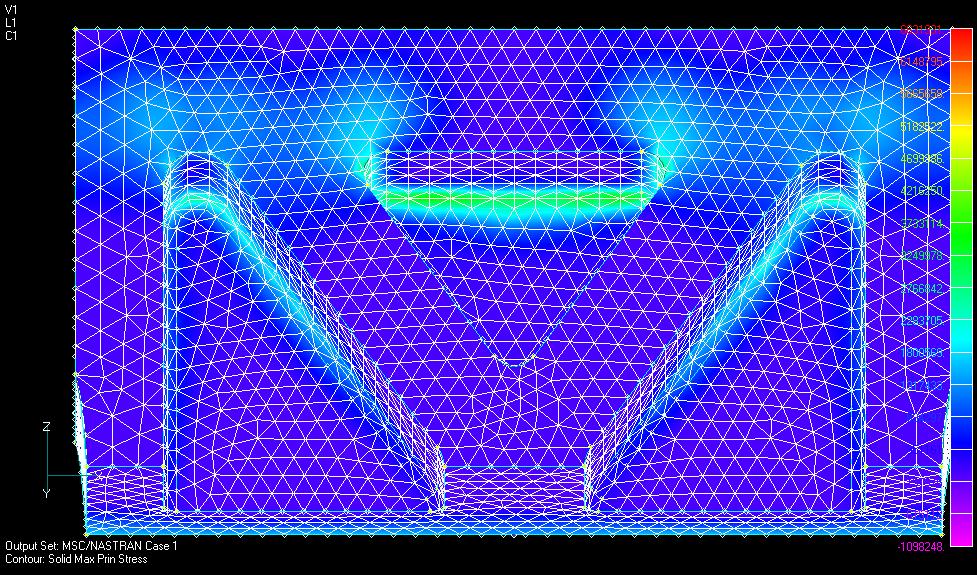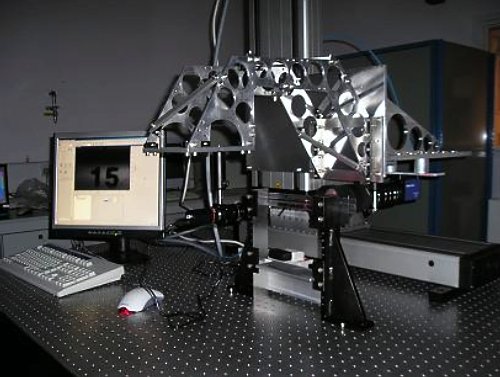LISA Pathfinder Optical Bench Mechanical Integrity
For reasons of mechanical stability, the optical bench structure for LISA Pathfinder is to be made from Zerodur, a glass-ceramic with a very low coefficient of thermal expansion. However, the brittle nature of Zerodur means that it becomes necessary to make sure that the components will withstand launch and service loads because the brittle failure mode is catastrophic.
-

CAD RENDERING OF OPTICAL BENCH ASSEMBLY
Unlike ductile metals, say, for which relatively simple to apply failure criteria exist, the assessment of brittle materials is more difficult. This is because brittle materials can fail via brittle fracture, which is where a very small initial crack or defect “grows” until the remaining material can no longer support the applied load. Under this condition, the crack propagates extremely rapidly to complete failure.
For failure to occur, the following two conditions are required;
An existing crack or defect
Sufficient Tensile stress, opening up the crack
Larger cracks, when compared with the working section, require lower values of tensile stress for failure than do smaller cracks. This inter-relationship is quantified using the theory of linear elastic fracture mechanics, the essence of which may be seen by considering the formula below;

Where;
K is the stress intensity
Y is a geometry dominated factor known as the stress intensity factor
Sigma is the tensile stress opening the crack
a is the crack length
Failure occurs when the stress intensity, K, reaches a critical level of intensity known as the fracture toughness. Fracture toughness is a material property. Formulae exist to determine Y, the stress intensity factor for many common geometries.
So, in order to reduce the risk of brittle fracture, it is necessary to understand the stress distribution caused by loading the component during launch, or during service,AND to understand the size, orientation, and location of existing cracks or defects.
To understand the stress distribution under typical loadings, a finite element model has been constructed using NASTRAN.
-

OPTICAL BENCH FE ANALYSIS RESULTS
To understand the distribution, and orientation of cracks, a scanning inspection facility, using both high magnification and stress measurement via a polariscope has been commissioned.
-

SCANNING INSPECTION FACILITY